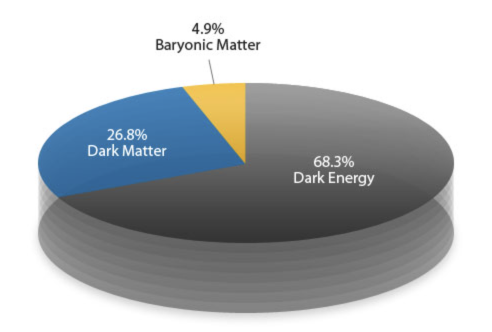Research
New Projects
Group for New Experiment Ideas
What is current problems of understanding particle physics?
The Standard Model (SM) of particle physics has been tested by many experiments in past 40 years. Recently the discovery of Higgs boson gives the further credence to the SM. Despite of being the most successful theory, it only explains interactions of ordinary matter (baryonic matter), about 5% of our universe (see Fig. 1).
It does not incorporate the gravitation or predict the accelerating expansion of the universe described as the dark energy. The theory does not contain the dark matter. Notably it does not explain the observation of neutrino oscillations indicating non-zero mass of neutrinos.

-
Figure 1 :
The latest results from the planck satellite on the energy densities attributed to dark energy, dark matter and ordinary matter (baryonic matter).
How are we doing?
In upcoming years, we would like to have any clue of the problems in the SM described above. To tackle those non-trivial problems, people in this group are developing new experimental ideas based on possible physics scenarios predicted by several new physics models and various detection technologies. We are currently studying the following topics:
- Next generation of dark matter experiment, especially for a low mass dark matter.
- Detection of solar axions and Axion Like Particle
- Detection of relic neutrinos
- Possible other physics topics in ongoing experiments :
- Short-baseline reactor neutrino experiment
- Dark matter experiment using NaI and CsI crystals, and low temperature measurement
- Neutrinoless double-beta decay experiment, AMoRE(Advanced Mo-based Rare process Experiment)
- A large underground experiment for astro-particle physics
 Center for Underground
Center for Underground